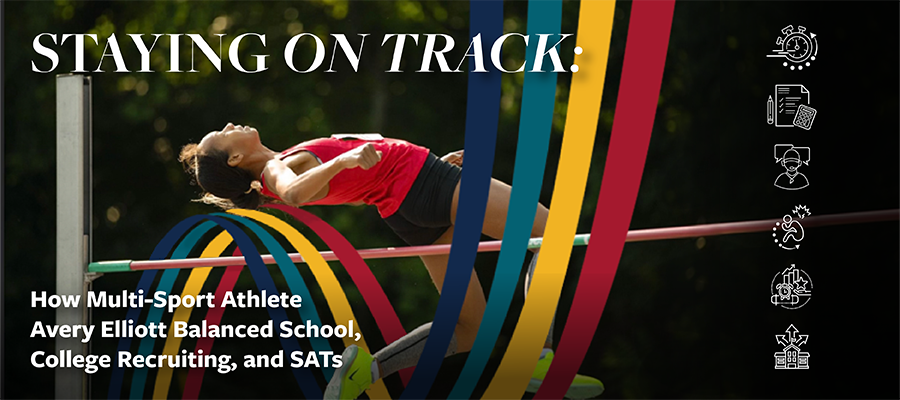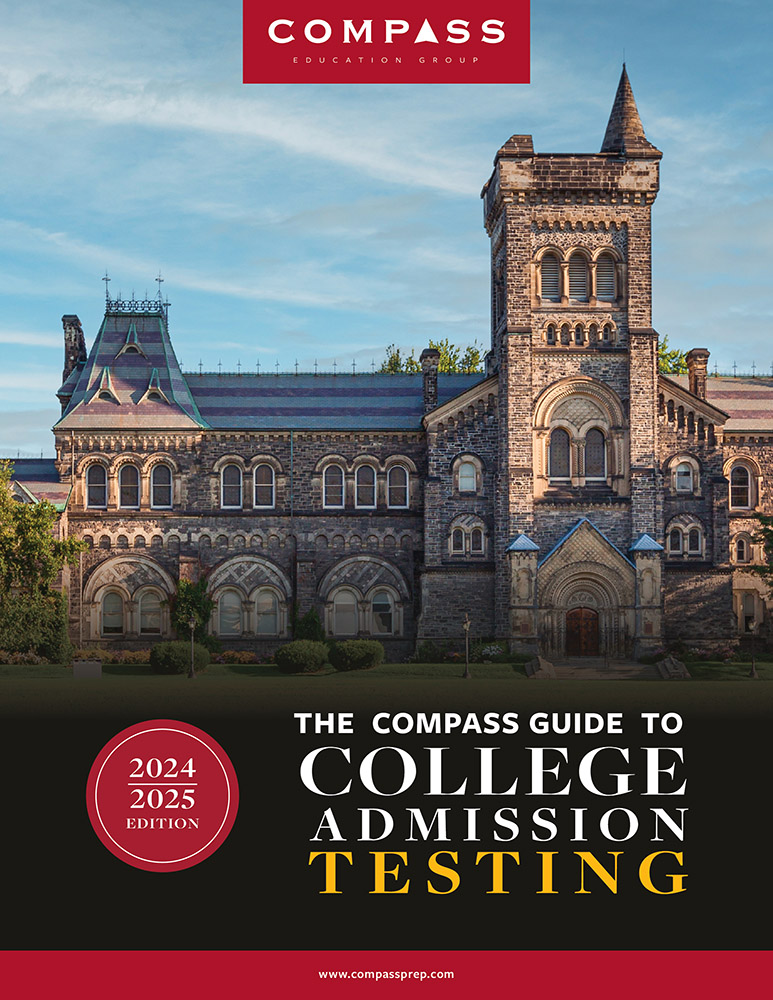
Just before a high-stakes performance, we enter a moment—usually quiet, sometimes a little tense—between preparation and decisive action.
Runners toe the starting blocks. Actors find their marks. Test-takers settle into their seats.
Separated, by a sliver of time and space, from the curving track, the expectant audience, the first challenging question.
We tend to fill this liminal instant with unspoken questions—How will I place? Will my performance soar? What score will I attain?—to which answers must wait. And will come soon enough.
The starter pistol cracks the silence.
The curtain ascends.
The proctor announces, “You may now begin.”
That space and time between preparation and execution dissolves, and we leave the starting line behind.
But we carry our preparation with us, and with it, approach the answer to one final question:
How well did I prepare?
Avery Elliott is no stranger to showing up prepared to the high-stakes starting lines of life.
There are literal lines, like those painted on the track at the National Track and Field Championships she competed in during the summer before junior year. And there are symbolic ones, like her first SAT she took at the end of that same summer.
To get ready for both events over two months, Elliott, a student and track star at Episcopal Academy in Pennsylvania, would travel to Stanford for a training camp and complete a full SAT prep program.
Elliott pointed to that summer as the busiest of her life. “I’ll go back and look at my calendar, and I’m like, I don’t know how I did that.”
Two years later, from the vantage point of a recent high school graduate, it’s incontestable that Elliott did do it, and a lot more. As a rising 11th grader, she received All American Honors in the heptathlon. As a rising 12th grader, she established herself as the top-ranked heptathlete in Pennsylvania, and among the top 20 nationally. Her track resume includes a litany of meet records and school records in high jump, long jump, hurdles, and 4×100 relays. In the classroom, Elliott excelled in many AP and other challenging courses. She received Episcopal Academy’s Mind, Body, and Spirit Award for demonstrating “excellence in the classroom exemplified by diligence, effort, athletic prowess, and admirable spirit and sportsmanship.”
Amid rigorous class and training schedules, she navigated athletic recruitment, researching colleges and track programs, communicating with coaches, and visiting campuses. Eventually, after weighing track and admission offers from multiple schools, Elliott chose to join the team and study digital media design at the University of Pennsylvania.
In a pentathlon or heptathlon, Elliott competes in hurdles, long jump, high jump, relays, javelin, and shot put. It’s a fittingly holistic event for a college recruiting process that scrutinizes a wide range of one’s capabilities. Here, she shares her advice for how recruited/recruiting-hopeful student-athletes can stay on-track by balancing the many “events,” discrete yet interconnected, that go into a successful transition to becoming a collegiate athlete.
Event 1: Scheduling
- “I schedule by the hour.”
Self workouts during free periods. Team track practices at 3:45 p.m. Commuting to New Jersey for high jump clinics. Fitting training around school meant Elliott needed to know how she was spending every hour. - Schedule breaks, too.
Elliott learned that high school life has to be more than grades, test scores, and track times, or “I was always going to really struggle.” She started to schedule her fun, too. - Start early.
Preparing for the SAT over the summer “was probably the best decision I could have made.” Fitting test preparation around summer track events was no simple task. But doing so was better than prepping during the school year, when she was even busier. - Meet with my tutor online.
“When I was at a Stanford track camp, I could just leave in the middle of it and do my [tutoring] session, and then come back and keep running, and then do the [SAT homework] later at night.”
Event 2: Testing
- Get strong scores as early as possible…
Since Elliott had already prepared for and taken the August SAT, she included her scores in introductory emails to coaches. - …to keep options open as late as possible…
“I didn’t really narrow down my options for schools until very late.” That allowed Elliott time to find the right fit. - … and relieve stress.
“Even though taking those tests was stressful, I knew if I had set myself up to be a good candidate, then I wouldn’t have to stress so much over [questions like], ‘Are my scores going to be high enough for this school?’” - Follow coaches’ guidance.
Student-athletes can get differing ACT/SAT advice from coaches. Coaches may ask for scores as early as fall of junior year. Or coaches may ask the student to test again to help open up opportunities to recruit strong athletes who may be softer-scoring. In Elliott’s case, the coaches recruiting her felt her August SAT scores were competitive enough. “They could have [asked me to re-test], if they didn’t think we would have a high enough score to be supported through the admissions process, but I guess it was good enough.” - Build a score buffer.
Elliott opted to retest anyway. She did some refresher prep and tested one more time, in the spring of junior year, for an even higher superscore.
Event 3: Communicating With Coaches
- Avoid cookie-cutter emails.
Along with her biggest track achievements, her favorite events, and her GPA and test scores, Elliott’s outreach emails to coaches included why she was drawn to the school. For example, in reaching out to Harvard, she cited her admiration of Olympic sprinter and Harvard track alumnae Gabby Thomas. With Penn, she expressed how she loved the combination of the city and campus vibe. - Make it a team effort.
Elliott’s mom, Tara (herself a former college track athlete), helped with the research. Together, they found “anything that couldn’t be sent to [every] single school.”
Event 4: Enduring Setbacks
- They are inevitable.
After a month of tutoring, Elliott scored 50 points lower than where she had started. She asked herself, “how does this happen?” She and her tutor dug into the data from her diagnostic reports to see exactly where she had slipped. - They test patience.
“It’s hard letting go of that desire to just get everything right on the first try,” Elliott said. “Every time I get on the track, I want a PR (personal record).” But, in both testing and track, progress takes time. - They are vital.
Sure enough, her next practice test was a lot higher. The feedback from each practice test helped her focus on where to allocate her study efforts. Setbacks are part of the learning process, and recognizing that, Elliott has learned not to be too hard on herself.
Event 5: Training Habits
- Use accountability methods.
Positive reinforcement, gamification, breaking up work, time boxing, or summoning willpower? When it came to completing her SAT homework, Elliott used all of the above. “I always did a part of the homework at different times, so I wouldn’t get bored or lose my focus.” - For track, ask: “How do I need to improve in specific events to be on their radar?”
By seeing how current college athletes were performing in her events, Elliott zeroed in on where to train. But she didn’t get overly fixated. Colleges follow recruiting standards “for the most part, but also not really,” she said. - For testing, take practice tests that offer detailed score reports.
Following a practice test, Elliott evaluated her score report with her tutors. “I could see exactly what I was doing wrong, or what was harder for me, and then get better at it,” she said, through deep practice.
Event 6: Decision Time: Choosing the right college
- Balance academics…
Elliott identified Penn’s digital media design program as unique amongst the schools recruiting her. “I hadn’t seen that major anywhere else, and Penn has a really great computer science program.” It felt like the right pathway to becoming a 3D animator. - … with athletics.
Having already run at Penn for high school nationals, Elliott came away with a strong positive impression: “I can see how much [Penn] invests in their track program and supports their athletes.” - Make sure the vibe is right.
Elliott appreciates that her new college track coach has not yet “placed her in the event booth,” or, in other words, has not determined whether Elliott will compete in hurdles, relays, javelin, shot put, high jump, long jump—or all of them. “I love the major and the freedom and flexibility that my coach is letting me explore.”
Elliott competes in track, but her guidance is useful for students whose “javelin” is their favorite pair of swim goggles, or whose 3:45 p.m. weekday practice is stage tech rehearsal.
Regardless of the pursuit, Elliott shows us what it meant for her to be prepared.
Managing her time. Bouncing back from setbacks. Timely help and individual effort.
When the energies of preparation converge on the starting line, they can redefine the meaning of the starting pistol, the rising curtain, the proctor’s announcement, “you may now begin.”
That’s because, in a way, for those who are well-prepared, the starting line is not just the starting line.
It’s also the finish line.







